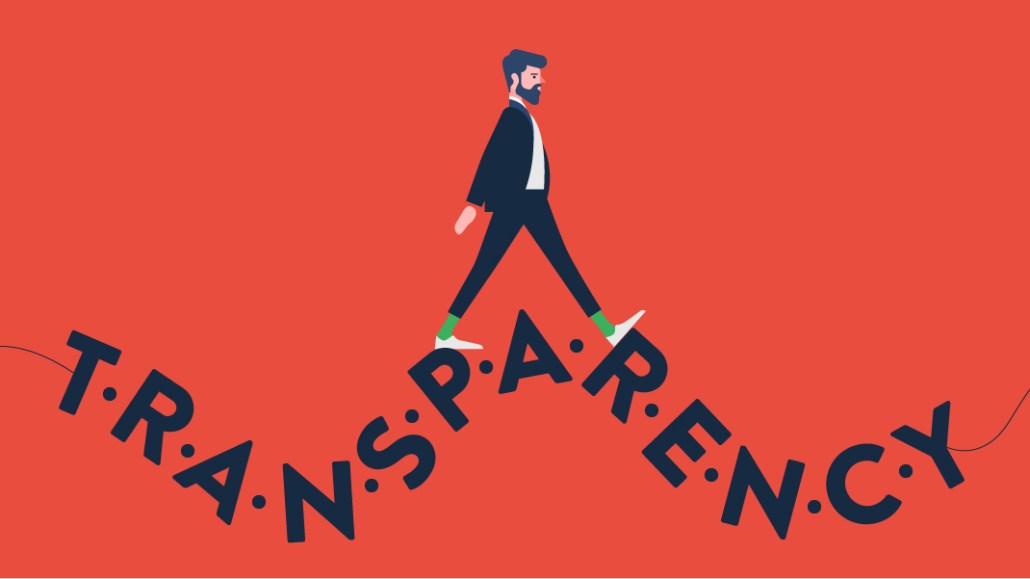Advertisers, agencies agree transparency in ad buying is a problem, but not so much on the blame

The blame game between advertisers and agencies is stalling the former’s efforts to uncover what happens to money spent on programmatic ads.
Transparency was unsurprisingly the recurring theme at the Digiday Programmatic Marketing Summit Europe in Estoril, Portugal, where it was clear the issue is far from solved. Advertisers blamed poor guidance from agencies more concerned with protecting margins on programmatic buys, while agencies challenged advertisers to pay more to understand how those investments work. Both sides want the other to take more responsibility for programmatic’s problems of hidden fees, fraud, viewability and brand safety, but neither are willing to take the lead.
“If we have problems with [transparency] today, then it’s not because of the technology powering advertising — it’s because we’re not sharing the information needed to stop brands throwing money into a black hole,” said one ad executive. “We’re having these conversations about transparency over and over again, but the knowledge needed to change the situation isn’t being shared.”
When Duracell realized how much of its money was swallowed by hidden fees versus what it spent on actual ads, it decided to build its own hybrid model. It struck a direct deal with a demand-side platform to manage its programmatic buys and a similar direct deal with a brand protection vendor so that it ran both the objectives and the reporting of its media buys. “We owned the bookends of our programmatic strategy,” said Jon Ones, head of digital for Duracell’s international markets, during his presentation.
The key to Duracell’s hybrid model is that it eliminated the risks for any hidden fees, said Ones. “If you own the contract for a demand-side platform, then it’s no longer possible for anyone to do media markups or publisher rebates because you [the advertiser] see the true costs directly in the platform that you own,” he said. “Having that visibility on those costs also means you can negotiate the right service fees.”
Marketing procurement teams aren’t equipped to make decisions on the right ad tech partners, said Nick Graham, global director of digital marketing and media at Huawei, during his session. There are still “pockets” where decisions are price-driven rather than made on the quality of the ad tech vendor because procurement hasn’t changed fast enough with the innovations, said Graham.
His point was revisited during a closed-door town hall discussion, where none of the marketers could say they had met their ad tech suppliers when asked by one executive.
Ad position: web_incontent_pos1
“The best meeting I ever had was understanding how the supply chain worked for the company [advertiser brand] I worked for,” said the same executive. “But in paid media, there may be one or two people who get it, and the rest are scrambling around trying to understand the ecosystem. If you just understood how your supply chain worked and took the fundamentals, speak with the publisher, understand who gets paid, ensure the publisher is getting paid a fair fee.”
For other advertisers attending the summit, the challenge of building more transparency into their programmatic supply chain isn’t isolated to agencies — getting the likes of Facebook and Google to open up about how their ad technologies and algorithms work is a bigger issue.
“Agencies, for me, are not the problem: Google and Facebook are even less transparent than agencies,” said one marketer during the town hall discussion. The duopoly is “trying to stuff” advertisers into its technology stacks without explaining how the systems powering them work. The duopoly is the “bigger problem,” said the marketer, adding that “for me, the fear is coming way more from them and Amazon versus my agency.”
An agency executive responded by advising brand advertisers to interrogate the platforms, like Google and Facebook, as much as they do traditional publishers. “Clients can be so keen to work with, say, Google, that they just don’t interrogate them in the same way that a publisher would get interrogated [for running ad campaigns], but they should be.”
Jessica Davies contributed reporting.
More in Media

NewFronts Briefing: Samsung, Condé Nast, Roku focus presentations on new ad formats and category-specific inventory
Day two of IAB’s NewFronts featured presentations from Samsung, Condé Nast and Roku, highlighting new partnerships, ad formats and inventory, as well as new AI capabilities.

The Athletic to raise ad prices as it paces to hit 3 million newsletter subscribers
The New York Times’ sports site The Athletic is about to hit 3 million total newsletter subscribers. It plans to raise ad prices as as a result of this nearly 20% year over year increase.

NewFronts Briefing: Google, Vizio and news publishers pitch marketers with new ad offerings and range of content categories
Day one of the 2024 IAB NewFronts featured presentations from Google and Vizio, as well as a spotlight on news publishers.
Ad position: web_bfu